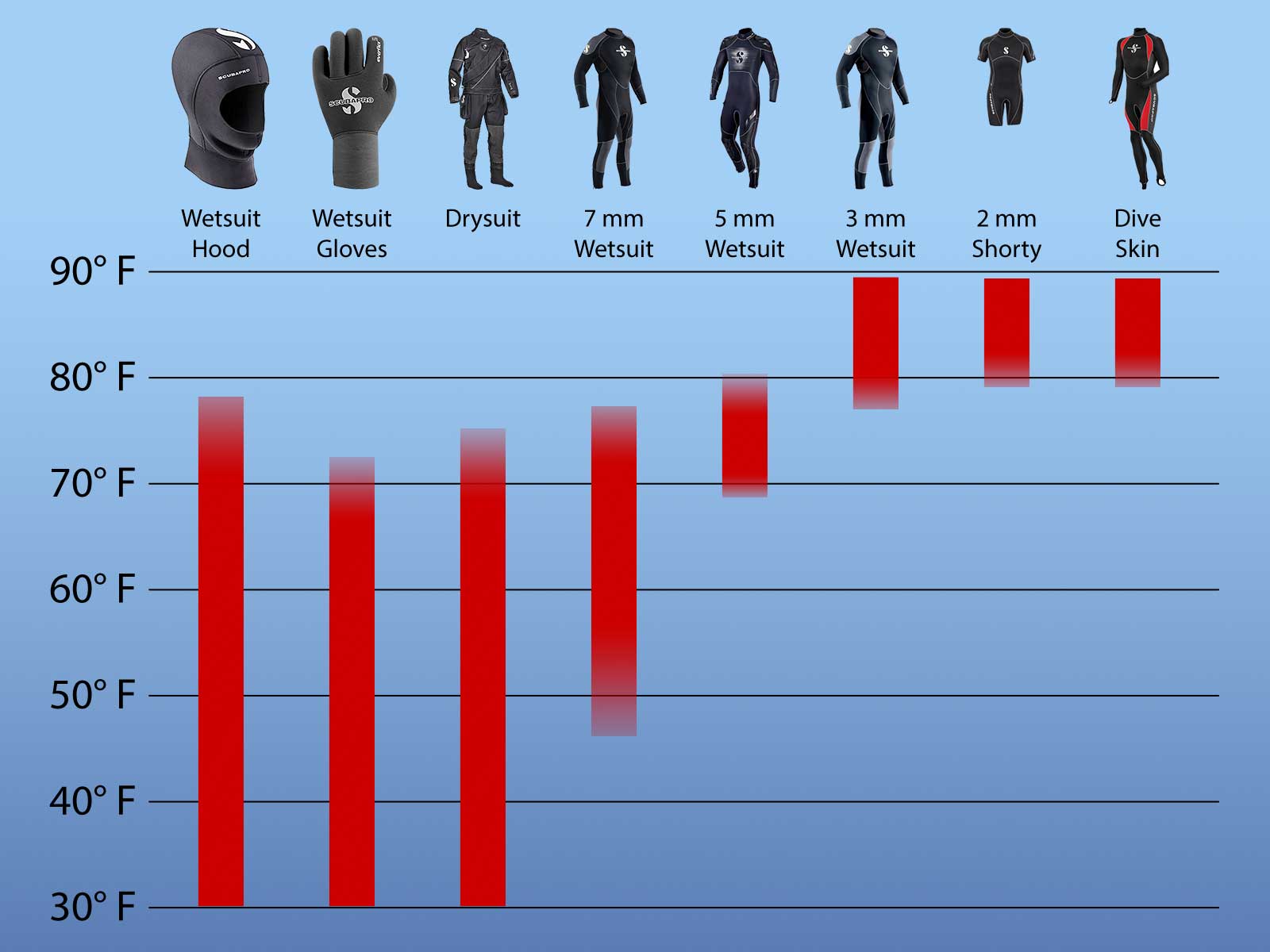Wetsuits

Purpose
There are two main purposes of wearing a wetsuit or other neoprene items: warmth and protection.
Wearing a wetsuit will provide extra warmth while enjoying snorkeling or scuba diving. One myth is that the wetsuit fills with water, your body warms the water, and the water is what keeps you warm. This is not true. Water is still a lower temperature than your body temperature, so it continues to cool your body. The wetsuit is what keeps you warm. So it needs to fit snug, but comfortable. The closer to your skin, the less chance of water flowing through the suit and cooler your body. Any air pockets will allow water to flush through which is not good.
A wetsuit will also provide protection to your skin while snorkeling or scuba diving. If you accidentally bump into sharp coral, sea urchins, or other pokey items, the wetsuit will help protect your skin from scrapes and abrasions. You'll also be protected from stings from things like jellyfish, sea lice, and other stinging creatures.
Features
Use
First thing to consider, where are you using the wetsuit, warm water or cold water, and will it be for snorkeling or scuba diving.
Style
A shorty wetsuit will have short legs (to the knees) and short arms (just above the elbow). A full wetsuit or jumpsuit will have full length arms and legs. A 2-piece wetsuit will either have a jacket (full arms, short legs) that fits over a farmer john bottom (full legs, no arms) or a tunic/core warmer (short legs, no arms) that fits over a full wetsuit. A 2-piece will essentially double up the thermal protection over your core.
Material
A lycra suit will be thin, very elastic, and works well to provide UV and sting protection. A wetsuit made with regular neoprene will have minimal stretch and basic comfort qualities. A wetsuit made with stretchy neoprene will be more flexible, easier to get on and take off, will conform to your figure better, and will have higher comfort qualities.
Thickness
A dive skin provides excellent UV and sting protection, but does not provide a lot of thermal protetion on its own. Worn underwater a wetsuit, it will help to keep a barrier between your skin, the water, and the wetsuit which will help with thermal protection. A 3mm wetsuit will be sufficient in warm water. If you are prone to getting cold easily, consider a 5mm wetsuit even in warm water. A 7mm wetsuit is required for temperate and cold water.

Care & Maintenance
Daily cleaning care will help prevent most of the funky smells to start with. At the end of each day rinse your suit inside and out with fresh water. Hang your suit inside out to dry the inside first, then turn to dry the outside thoroughly. Hang the wetsuit on a heavy duty hanger. Wetsuits are heavy when wet so not all hangers are up for the job. Let your suit hang dry and keep it out of direct sunlight if possible.
After a dive trip or a few days of diving, you may find the wetsuit starts to take on a funky odor. Use wetsuit shampoo to soak your neoprene gear and clean the salt, chlorine, and smell from the suit.
Storage of your suit is important. When stored for long periods of time folded or packed away neoprene will tend to get creased, musty and even moldy. Store your clean suit on a chunky wetsuit hanger in a cool, dry place and avoid keeping it in a garage with vehicles exhaust. Avoid using thin, wire hangers as they can cut through the delicate neoprene material or create a permanent crease and ruin your wetsuit.


